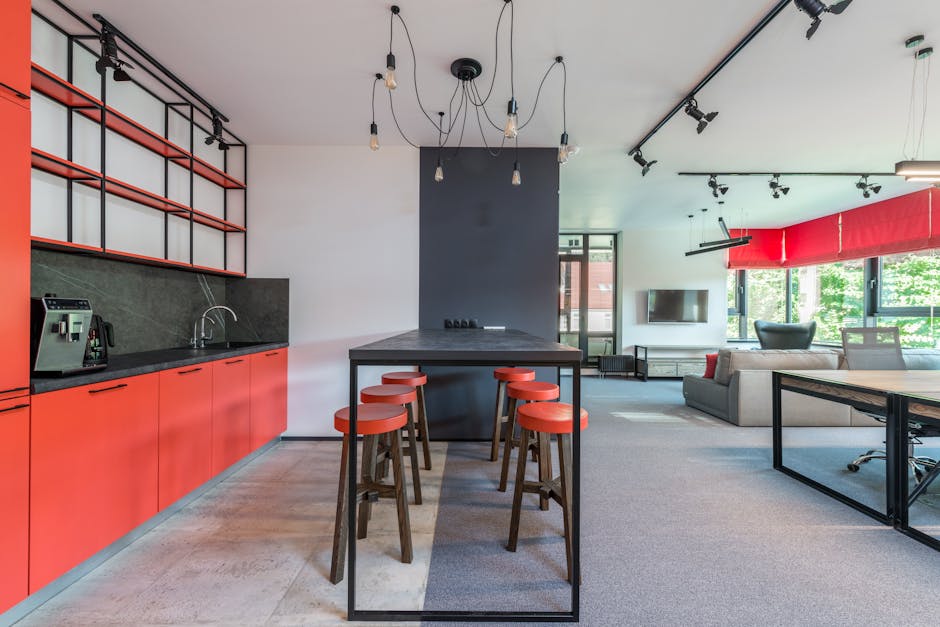Transforming Office Facility Management in the Hybrid Era: Challenges and Opportunities
“As organizations embrace hybrid work models, facility managers face new challenges in office space management. This article explores key areas of change, including real estate planning, workspace design, and technology integration, offering practical strategies for creating efficient and collaborative hybrid offices. ”

In today's dynamic business landscape, office facility management is undergoing a significant transformation. The rise of hybrid work models has ushered in a new era of challenges and opportunities for facility managers. This article delves into the evolving role of facility management in the hybrid office environment, exploring key areas of change and providing actionable insights for creating efficient, collaborative, and sustainable workspaces.

The Hybrid Office Revolution
The hybrid office model, which combines remote and in-person work, has gained tremendous popularity in recent years. According to Gartner, 82% of organizations plan to adopt a hybrid work model in the near future. This shift is driven by employee preferences, with 87% of knowledge workers expressing a desire for flexible work arrangements that allow them to work both remotely and in-person.
The benefits of hybrid offices are numerous:
- Increased productivity
- Improved work-life balance
- Reduced overhead costs
- Access to a global talent pool
However, this new model also presents unique challenges for facility managers who must adapt their strategies to accommodate fluctuating office occupancy and changing employee needs.
Key Areas of Change in Facility Management
1. Real Estate and Space Planning
In the hybrid era, traditional office planning strategies based solely on headcount are no longer sufficient. Facility managers must now consider:
- Employee working styles
- Flexible space requirements
- Potential for co-working sites or subleased locations
This shift requires a more agile approach to real estate planning, with managers needing to adapt quickly to changing needs and collaborate closely with HR departments to understand employee behavior and preferences.
2. Office Space Design and Configuration
The physical layout of offices is evolving to support hybrid work models. Key considerations include:
- Implementing desk-sharing programs
- Creating more collaborative spaces
- Incorporating hot desks for individual work
These changes aim to foster a more adaptable and productive workspace that encourages teamwork and innovation.

3. Workplace Technology Stack
A robust technology infrastructure is crucial for supporting both remote and in-person work. Facility managers must invest in:
- Video conferencing tools
- Collaboration platforms
- Cloud-based storage solutions
- Easy-to-use internet and laptop-charging docks
The focus is on providing employees with the tools they need to work effectively, regardless of their location.
4. Office Space Booking Systems
With employees coming into the office on flexible schedules, efficient space booking systems are essential. Modern solutions include:
- Mobile apps for booking workstations
- Digital kiosks for locating available spaces
- Tools for finding and connecting with colleagues
These systems help maximize office space utilization and improve the overall employee experience.
5. Facility Services
The delivery of facility services is shifting from cyclical schedules to on-demand models. This change reflects:
- Varied use of workplaces
- Non-standard operating hours
- Need for flexible cleaning and maintenance schedules
By adapting service provision, facility managers can ensure a safe and comfortable environment for employees, regardless of when they choose to work.
Leveraging Change: Strategies for Success
To create successful hybrid offices, facility managers can employ several strategies:
Utilize Workplace Data
Collecting and analyzing data on space utilization, employee preferences, and work patterns is crucial for informed decision-making. This data can help:
- Optimize space allocation
- Identify underutilized areas
- Inform future real estate decisions
Workplace occupancy data can provide valuable insights for improving office efficiency and employee satisfaction.
Focus on Collaboration
Creating spaces that promote collaboration is essential in hybrid offices. Consider:
- Designing open areas for spontaneous interactions
- Implementing technology that supports virtual collaboration
- Encouraging regular communication between remote and in-office teams
Implement Integrated Workplace Tools
Adopting comprehensive workplace management software can streamline operations and improve the employee experience. Look for solutions that offer:
- Space booking capabilities
- Occupancy tracking
- Facility service request management
Align Strategy with HR and IT Teams
Close collaboration between facility management, HR, and IT teams is crucial for creating an effective hybrid office environment. This partnership ensures:
- Alignment with overall business strategy
- Proper policies and procedures for remote work
- Necessary technology infrastructure and support
Prioritize Sustainability
Integrating sustainability into facility management strategies can lead to long-term success. Consider:
- Implementing energy-efficient systems
- Reducing waste through recycling programs
- Encouraging eco-friendly commuting options

By focusing on sustainability, facility managers can not only reduce operational costs but also improve the workplace experience for employees who increasingly value environmentally conscious employers.
Conclusion
The hybrid office model presents both challenges and opportunities for facility managers. By embracing change and adopting innovative strategies, they can create workspaces that are efficient, collaborative, and aligned with the needs of modern employees. As the workplace continues to evolve, facility managers who stay adaptable and forward-thinking will play a crucial role in shaping the future of work.
By leveraging workplace data, focusing on collaboration, implementing integrated tools, and prioritizing sustainability, facility managers can transform office spaces into dynamic environments that support productivity, innovation, and employee well-being in the hybrid era.